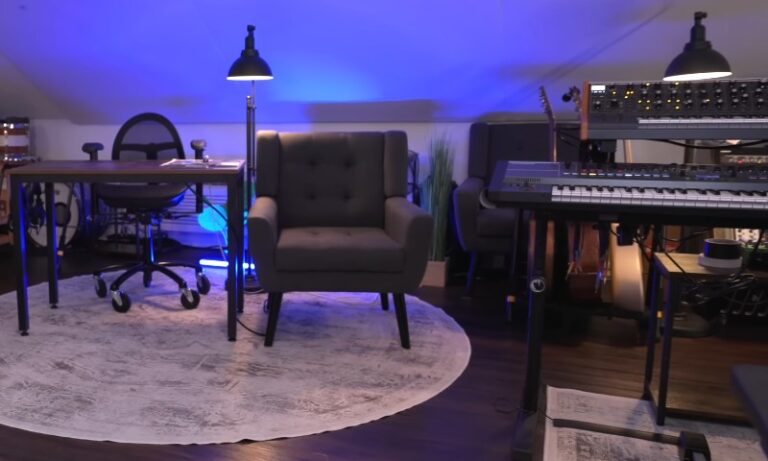If you’re just starting play guitar, learning chords might seem like a big task. But no worries, I’m here to guide you through one of the fundamental chords for beginners: the D7 chord.
Let’s begin right away and get you strumming!
Table of Contents
ToggleWhat is the D7 Chord?
The D7 chord is a type of seventh chord that adds a bit of a jazzy, bluesy feel to your music. It’s frequently found in genres like country, blues, and folk.
So, let’s break down how to play it and make it part of your repertoire.
Step-by-Step Guide to Playing the D7 Chord
Place Your Fingers Correctly
- Middle Finger: Put your middle finger on the 2nd fret of the G string (3rd string from the bottom).
- Index Finger: Place your index finger on the 1st fret of the B string (2nd string from the bottom).
- Ring Finger: Position your ring finger on the 2nd fret of the high E string (1st string from the bottom).
Strum the Chord
When strumming, make sure you only play the bottom four strings (D, G, B, and E). Avoid hitting the top two strings (E and A) as they aren’t part of this chord.
Check the Sound
Strum the chord and listen to each string to ensure they all ring out clearly. Adjust your fingers if any strings sound muted or buzzy.
Tips for Beginners
- Finger Placement: Press down on the strings just behind the frets, not on top of them. This helps you get a clean sound.
- Practice Slowly: Take your time placing each finger and strumming slowly. As you get more comfortable, you can start playing faster.
- Use a Metronome: It can help you keep a steady rhythm as you practice transitioning between chords.
Common Variations of the D7 Chord
Once you’re comfortable with the basic D7 shape, you can explore other variations:
- C7 Shape: Move this chord shape up two frets to play a D7 chord in a different position.
- Barre Chords: Try playing D7 using a barre chord shape for a fuller sound.
Practice Makes Perfect
The more you practice, the more natural playing the D7 chord will feel. Try incorporating it into simple songs or chord progressions to get used to switching in and out of the chord.
Facts and Techniques
- The D7 guitar chord has eight different ways to be played.
- Learning the D7 chord can help improve your overall guitar skills.
- The D7 chord is an advanced version of the regular D chord, with an added C note.
- The open D7 guitar chord is one of the easiest and most common ways to play D7.
- The D7 chord can be played using a barre chord with the E7 shape.
- Techniques to master the barre chords include ensuring correct finger placement and practicing without looking at the fretboard.
- Familiarity with the CAGED system can help in moving chord shapes up and down the fretboard.
- The D7 chord is frequently used in blues progressions.
Exploring Further
Practicing Barre Chords
Barre chords might seem challenging at first, but they are incredibly useful. For the D7 barre chord:
- Index Finger: Barre all strings at the 10th fret.
- Middle Finger: Press down on the 11th fret of the B string.
- Ring Finger: Press down on the 12th fret of the D string.
- Pinky Finger: Press down on the 12th fret of the high E string.
Using the CAGED System
The CAGED system is a method to move chord shapes up and down the fretboard. By learning this system, you can play the D7 chord in multiple positions, giving you versatility in your playing, similarly to DADGAD system.
Simple Songs to Practice
Incorporating the D7 chord into your practice routine can be more enjoyable by playing songs that use it. Here are a couple of classics:
- “Brown Eyed Girl” by Van Morrison: This song uses a simple progression where you can practice switching in and out of the D7 chord.
- “I’m A Believer” by The Monkees: Another great song to practice that includes the D7 chord in its progression.
- “Hey Jude” by The Beatles (D, G, A, E, F#m, B7, D7)
- “Let It Be” by The Beatles (C, G, D, D7, Am, G7)
- “I Still Haven’t Found What I’m Looking For” by U2 (D, G, D7, A)
- “Knockin’ on Heaven’s Door” by Bob Dylan (G, D, Am7, D7)
- “Ring of Fire” by Johnny Cash (G, C, D7)
- “Stand By Me” (G, Em, C, D7)
Final Thoughts
Learning the D7 chord is a stepping stone to mastering the guitar. With practice, patience, and persistence, you’ll find that your fingers will naturally find their way to the correct positions, and the beautiful, bluesy sound of the D7 chord will become a regular feature in your playing.
Keep practicing, and before you know it, you’ll be strumming away effortlessly, adding that extra bit of flair to your music with the D7 chord.















